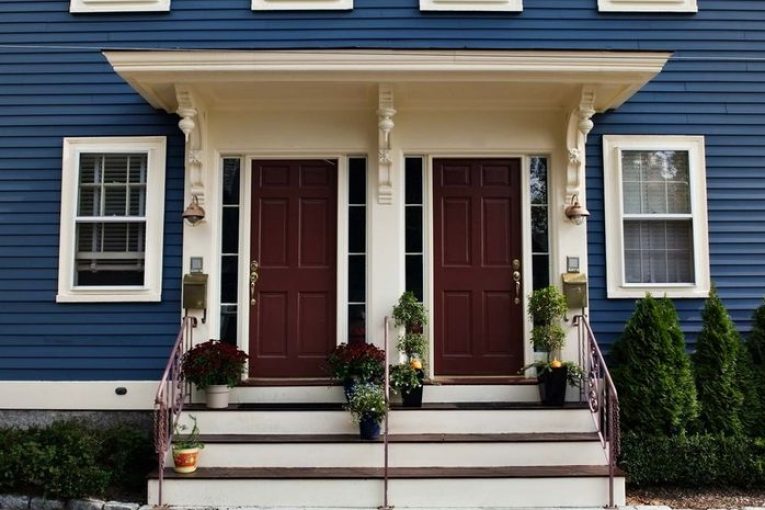

By David M. Greenwald
Executive Editor
Last month we noted that, despite hopes and fears, SB 9 really hasn’t generated a huge amount of change so far. A report found that nothing has changed so far.
“I think the people that have been pushing for this for so long were just glad to get it through,” said Lee Ohanian, an economics professor at UCLA and senior fellow at the Hoover Institute (as reported in the Bee). “But it really ends up being much ado about nothing.”
My reaction is that was exactly what studies from the Terner Center predicted a few years ago.
David Garcia, policy director at the Terner Center wrote in the Bee in 2021, “A recent analysis by UC Berkeley found that SB 9 could play a role in the state’s overall housing solution, but financial and geographic factors will limit its impact to just a small percentage of the state’s single-family homes.”
While I think we need to start looking at other possible solutions to the housing crisis, the LA Times Editorial Board is urging caution and patience, saying “radical change doesn’t happen overnight.”
They argue that “the law is more likely to gradually change communities by adding a little density and a few more homes over years, not months.”
But they also note, “California can’t afford to have housing production move too gradually, though.”
So why is SB 9 not generating a lot of new applications by property owners to build a duplex on a single-family lot, or subdivide the property into two lots that can each accommodate two units, which could be sold separately?
By way of comparison, the Times found that cities in 2021 permitted about 20,000 ADUs (2021 is the most recent available statistic but the Times does believe 2022 will be similar if not higher).
Compare Los Angeles. Los Angeles had 211 applications for homes under SB 9, but that number is dwarfed by the 5000 ADU permits approved in 2021.
“Why are ADUs booming but not SB 9 duplexes?” they ask. “They’re similar housing types in similar communities, but it’s easier to build an ADU now thanks to multiple state laws passed since 2016 that overruled local requirements for parking, setbacks and other criteria that made it difficult and expensive to build backyard homes.”
In short, the Editorial Board believes, “If lawmakers want to see more duplexes for sale or lease in single-family neighborhoods, they’ll have to pass more laws streamlining the process and overriding local regulations that make it unnecessarily expensive and complicated to build.”
They also argue, “The slow progress so far doesn’t mean the law has failed. SB 9 was never going to be a magical solution to California’s housing crisis. It was (and is) an important step to lift restrictive zoning laws that have made it too hard to build enough homes to keep up with population growth.”
A critical point however is, “Two-thirds of residential land in California had been restricted to single-family homes and had been off-limits to the development of backyard houses, duplexes and fourplexes that would be more affordable to middle-income and low-income renters and buyers.”
The hope was that SB 9 would remove these restrictions and open up neighborhoods to more housing opportunities.
The editorial board did a good job noting the difference in ADUs versus SB 9, and I think their point that it won’t happen overnight is a good one, especially given the cost of construction and the problems of rising interest rates.
Still, what seems to be happening now with SB 9 is what was predicted when it was passed.
In their analysis, Ben Metcalf, David Garcia, Ian Carlonton and Kate MacFarlane write: “SB 9 has potential to expand the supply of smaller-scaled housing, particularly in higher-resourced, single-family neighborhoods. In this way, SB 9 builds on recent state legislation that opened up access to accessory dwelling units (ADUs) for virtually all California single-family parcels.
“What distinguishes SB 9 is that it allows for the development of new, for-sale homes, either on a newly subdivided lot or through the conversion of existing single-family homes into multiple units. This ability to create duplexes and/or split the lot and convey new units with a distinct title would allow property owners to pursue a wider range of financing options than are available for ADU construction to build these new homes.”
“Yet, the likelihood of creating new housing and homeownership opportunities as a result of SB 9 largely depends on local context,” they write. “While Senate Bill 9 does not apply to single-family parcels in historic districts, fire hazard zones, and rural areas, local market prices and development costs play a large role in determining where there is financial viability for the addition of new homes.”
So, what is the impact?
This analysis, the most detailed one yet on the impact of SB 9, “finds that SB 9’s primary impact will be to unlock incrementally more units on parcels that are already financially feasible under existing law, typically through the simple subdivision of an existing structure.”
Key word: incrementally.
In other words, the LA Times has a point. “California’s housing shortage was created over decades. Reforming the housing laws that fueled the crisis will take time as well. It’s an essential culture shift for the future of the state that is not going to happen in just a year. Give SB 9 time to work.”
Still I think the state legislature should heavily focus on ways to facilitate affordable housing development and finding more in the way of state and federal monies to accomplish that.

